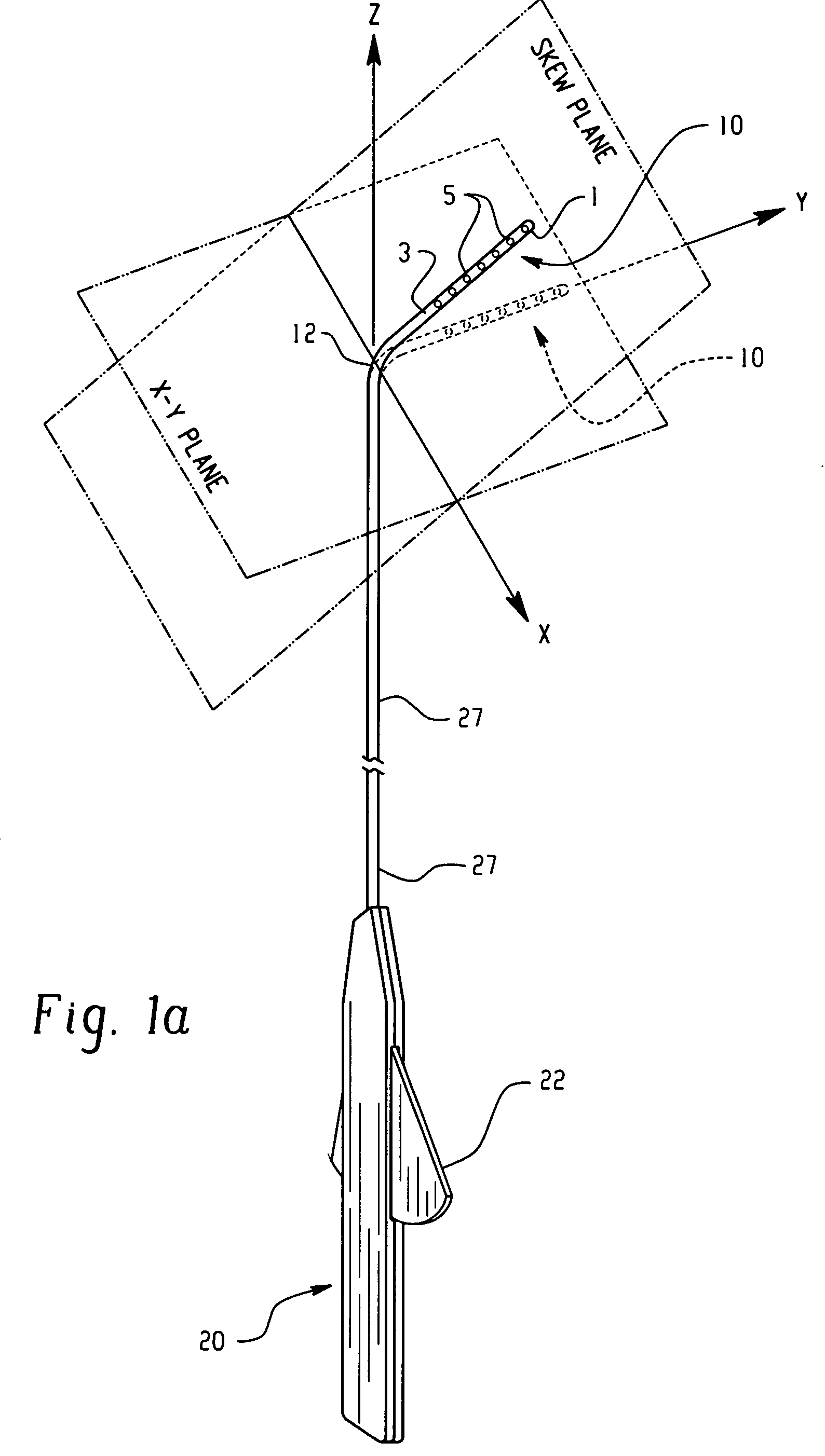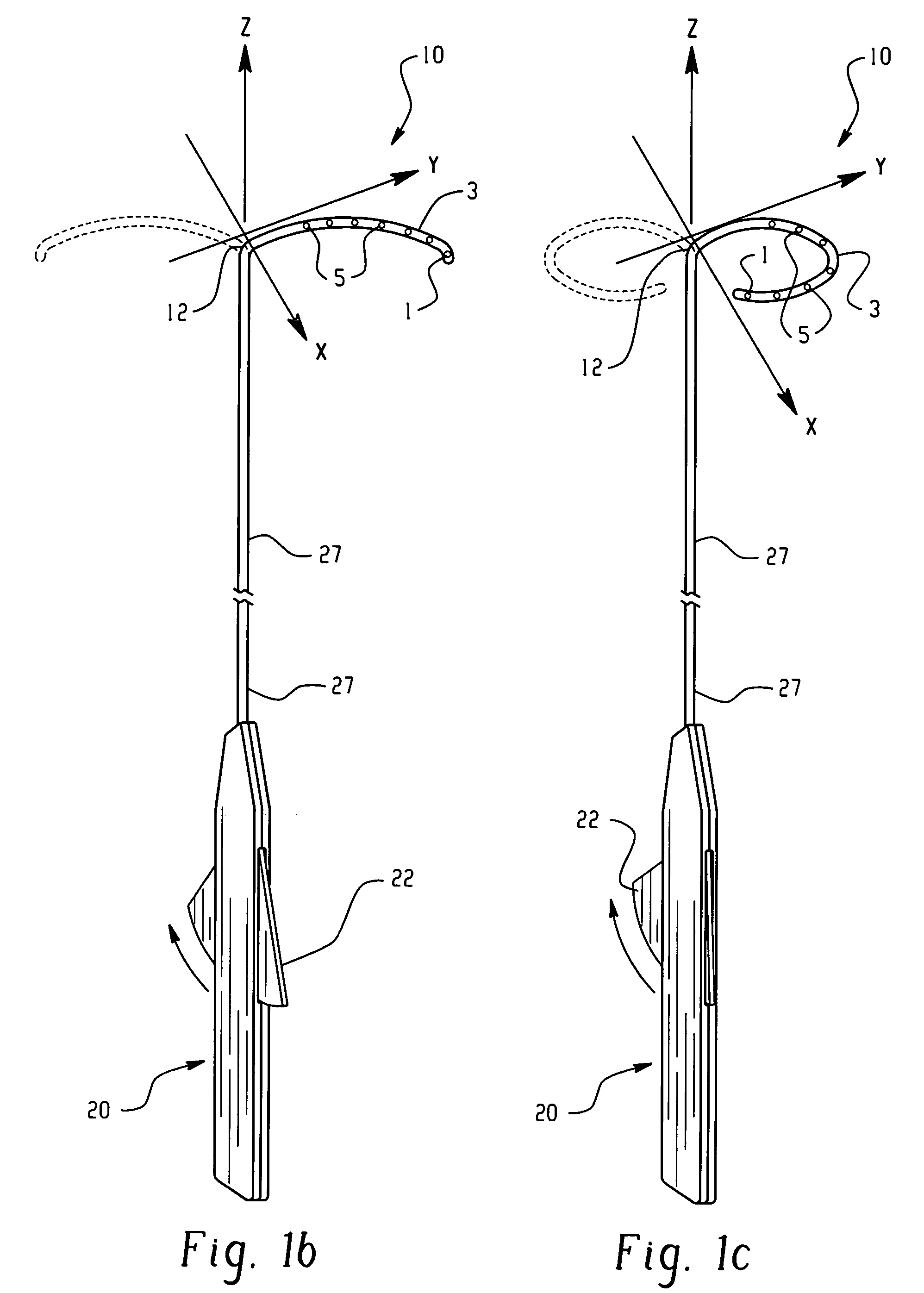Electrophysiology/ablation catheter having lariat configuration of variable radius
a technology of lariat and catheter, which is applied in the field of catheters, can solve the problems that such a catheter has not been provided, and achieve the effect of facilitating catheter flexure and enhancing catheter distal curling
- Summary
- Abstract
- Description
- Claims
- Application Information
AI Technical Summary
Benefits of technology
Problems solved by technology
Method used
Image
Examples
Embodiment Construction
[0031]Referring to FIGS. 1a through 1c and FIG. 2, the distal portion of the catheter is indicated generally at 10 and has a tubular flexible outer casing 3 with a distal end electrode 1 and a plurality of spaced electrodes 5 disposed thereon and preferably having an annular or ring shaped configuration. An initial permanent or pre-bend indicated generally at 12 is formed in the region adjacent the proximal-most one of the distal ring electrodes 5. In the presently preferred practiced, the pre-bend 12 is formed about the X axis and is formed to angle of about 90 degrees and preferably about 83 degrees for a casing of about 1.6 mm diameter (6 French) and for a minimum radius of 5 mm for the lariat as shown in dashed outline in FIG. 1c. In the present practice of the invention for a catheter casing 3 having a diameter of about 1.6 mm (6 French) and a lariat curled at 15 mm radius, a pre-formed bend 12 of about 45 degrees, as shown in solid outline in FIG. 1a, has been found satisfacto...
PUM
 Login to View More
Login to View More Abstract
Description
Claims
Application Information
 Login to View More
Login to View More - R&D
- Intellectual Property
- Life Sciences
- Materials
- Tech Scout
- Unparalleled Data Quality
- Higher Quality Content
- 60% Fewer Hallucinations
Browse by: Latest US Patents, China's latest patents, Technical Efficacy Thesaurus, Application Domain, Technology Topic, Popular Technical Reports.
© 2025 PatSnap. All rights reserved.Legal|Privacy policy|Modern Slavery Act Transparency Statement|Sitemap|About US| Contact US: help@patsnap.com



